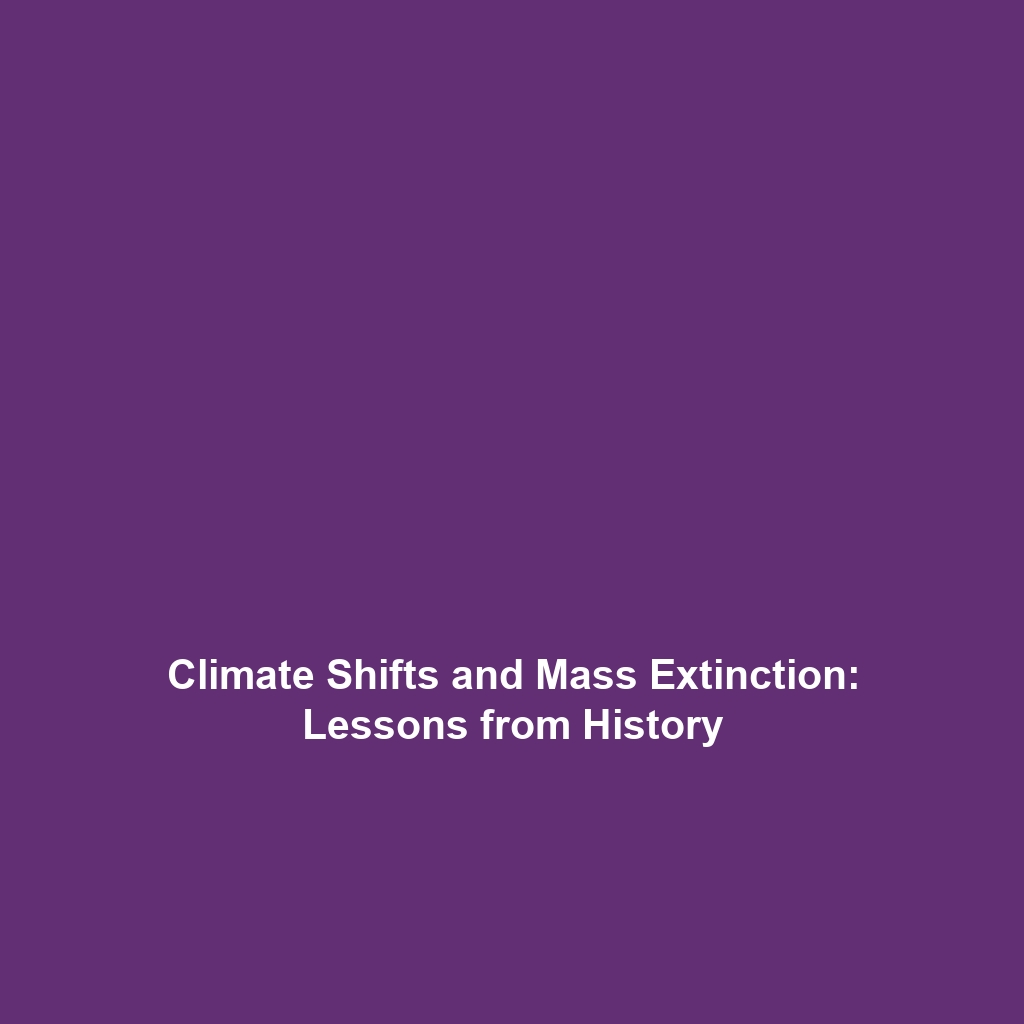Climate Models: Using Mathematical Models to Simulate Past Climate Conditions and Predict Future Changes
Introduction
Climate models are essential tools that utilize mathematical equations to simulate past climate conditions and predict future climate changes. Understanding these models is vital within the broader context of climate history, as they help researchers uncover patterns, analyze trends, and make informed projections about our planet’s climate future. By employing these models, scientists can bridge the gap between historical climate data and contemporary climate challenges, thereby contributing to climate science and policymaking.
Key Concepts
The study of climate models encompasses several key concepts:
1. The Nature of Climate Models
Climate models are representations of the Earth’s climate system, built on physical principles and mathematical physics. They divide the Earth’s atmosphere, oceans, and land surface into grids to simulate the interactions between different components.
2. Types of Climate Models
There are various types of climate models, including:
- Energy Balance Models: Simplified models that consider energy inputs and outputs of the Earth.
- General Circulation Models (GCMs): Complex formulations that account for atmospheric and oceanic processes.
- Regional Climate Models (RCMs): Focused simulations that provide detailed climate projections for specific regions.
3. Climate Forcing Agents
Key drivers such as greenhouse gas emissions, solar radiation changes, and volcanic activity influence climate models. Understanding these forces is essential in climate history as they affect long-term climate trends.
Applications and Real-World Uses
Climate models have various significant real-world applications, particularly within climate history:
- Historical Climate Reconstruction: Models help decode past climate events, enabling researchers to understand climatic shifts over centuries.
- Disaster Preparedness: By predicting extreme weather events, models assist governments in mitigating risks and preparing for disasters.
- Policy Formulation: Climate models provide data that influences environmental policies and sustainability practices.
For instance, climate models are used to forecast heatwaves, leading to improved public health messaging about heat-related risks.
Current Challenges
Despite their significance, climate models face several challenges:
- Data Limitations: Inadequate historical data restricts model accuracy, particularly for ancient climate reconstructions.
- Uncertainty in Projections: Variability in emissions scenarios leads to uncertainty in future predictions.
- Computational Constraints: High-resolution models require substantial computational resources, limiting accessibility for some researchers.
Future Research and Innovations
Innovations in climate modeling are continuously emerging and are crucial for enhancing our understanding of climate history:
- AI and Machine Learning: Researchers are exploring artificial intelligence to improve model predictions and data analysis.
- Integrated Earth System Models: Next-generation models that consider biogeochemical feedbacks will provide a more holistic view of climate interactions.
- Enhanced Observational Networks: Improving data collection methods can lead to more accurate models.
Conclusion
Climate models are invaluable in simulating past climate conditions and predicting future changes, playing a significant role in understanding climate history. By bridging historical climate data and advancing predictive capabilities, these models help address contemporary climate challenges. It is imperative for researchers, policymakers, and the public to engage with and support the enhancement of climate modeling efforts. For further reading on climate variables and their impacts, visit our articles on climate variables and climate policy initiatives.
